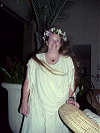|

|
|

|
|

|
|

|
|

|
|

|
|

|
|

|
|

|
|

|
|

|
|

|
|

|
|

|
|

|
|

|
|

|
|

|
|

|
Click here for lots more pictures.
email the Webmaster | entire website copyright © The SETI League, Inc. this page last updated 11 January 2003 |
Top of Page |
 SETI League Photo Gallery
SETI League Photo Gallery
(Click on thumbnail to download full picture)
Attn. Journalists and Photo Editors: please check our Fair Use Policy before reproducing any of these images. Thank you.
|

|
|

|
|

|
|

|
|

|
|

|
|

|
|

|
|

|
|

|
|

|
|

|
|

|
|

|
|

|
|

|
|

|
|

|
|

|
Click here for lots more pictures.
email the Webmaster | entire website copyright © The SETI League, Inc. this page last updated 11 January 2003 |
Top of Page |